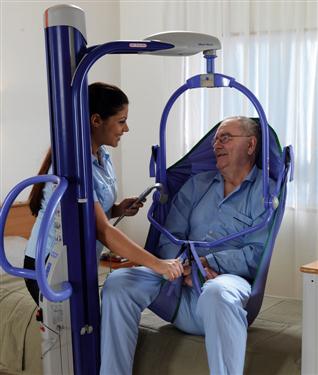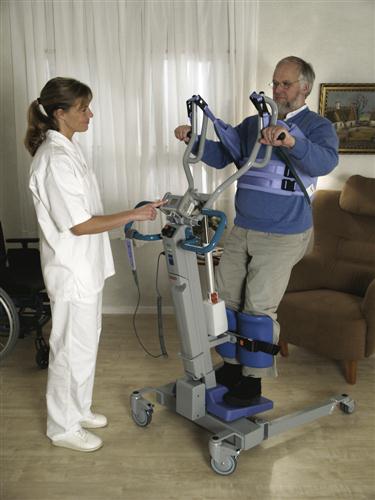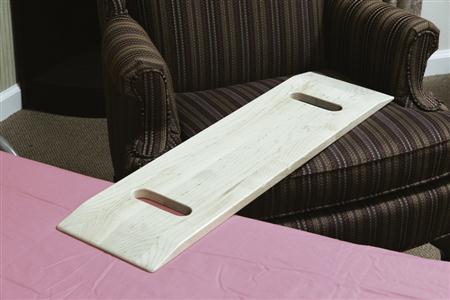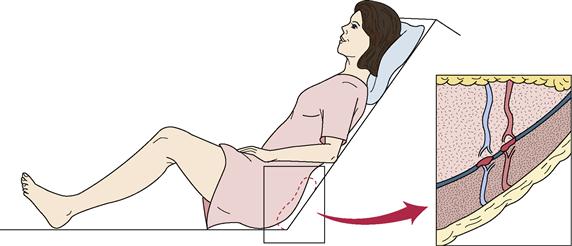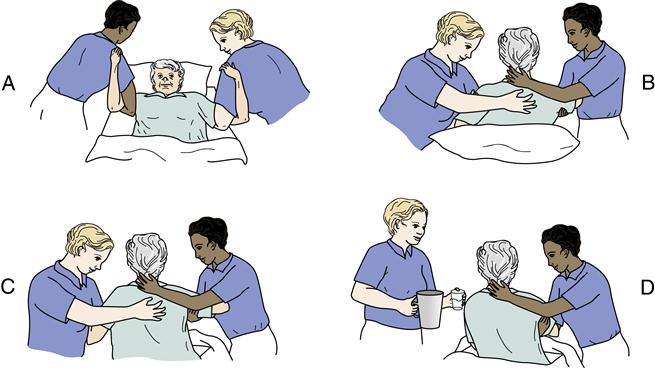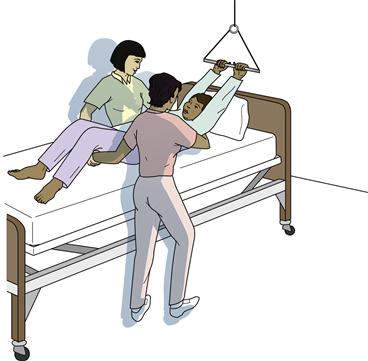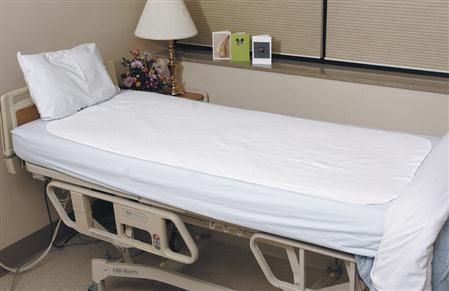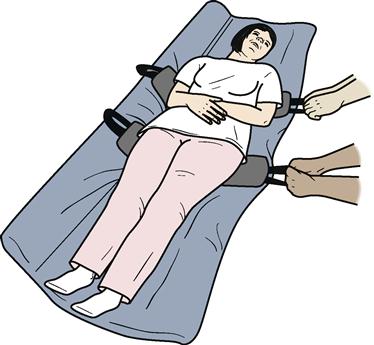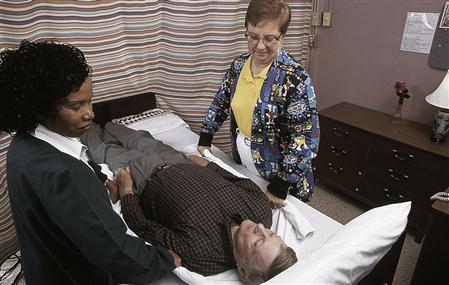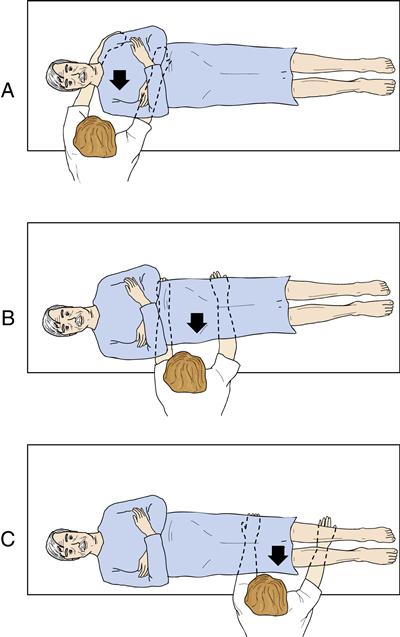Safe resident handling, moving, and transfers
Objectives
• Define the key terms and key abbreviations listed in this chapter.
• Identify comfort and safety measures for handling, moving, and transferring the person.
• Explain how to prevent work-related injuries when handling, moving, and transferring persons.
• Describe four levels of dependence.
• Perform the procedures described in this chapter.
Key terms
friction The rubbing of one surface against another
logrolling Turning the person as a unit, in alignment, with one motion
shearing When skin sticks to a surface while muscles slide in the direction the body is moving
transfer Moving the person from one place to another
KEY ABBREVIATIONS
| ID | Identification |
| OSHA | Occupational Safety and Health Administration |
You will turn and re-position persons often. You move them in bed. You transfer them to and from beds, chairs, wheelchairs, stretchers, and toilets. To transfer a person means moving the person from one place to another. During these and other tasks, you must use your body correctly. This protects you and the person from injury.
See Focus on Communication: Safe Resident Handling, Moving, and Transfers.
See Promoting Safety and Comfort: Safe Resident Handling, Moving, and Transfers.
See Teamwork and Time Management: Safe Resident Handling, Moving, and Transfers.
Preventing work-related injuries
You must prevent work-related injuries when handling, moving, and transferring residents. Follow the rules in Box 17-1. The Occupational Safety and Health Administration (OSHA) recommends that:
To safely handle, move, and transfer the person, the nurse and health team determine:
• The person’s dependence level. Dependence levels relate to the ability to move without help. Some persons do not need help moving. Others totally depend on the staff. You need to know the person’s dependence level before you handle, move, or transfer a person. See Box 17-2, p. 222.
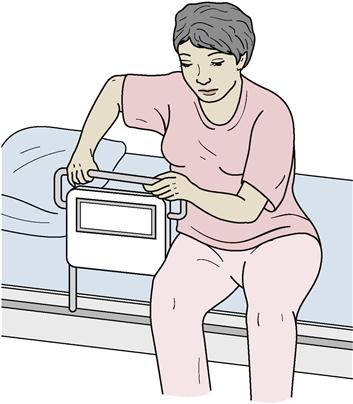
Modified from Nelson AL: Patient care ergonomics resource guide: safe patient handling and movement, Patient Safety Center of Inquiry (Tampa, Fla), Veterans Health Administration and Department of Defense, August 2005.
See Residents With Dementia: Preventing Work-Related Injuries, p. 224.
See Teamwork and Time Management: Preventing Work-Related Injuries, p. 224.
See Delegation Guidelines: Preventing Work-Related Injuries, p. 224.
See Promoting Safety and Comfort: Preventing Work-Related Injuries, p. 224.
Moving persons in bed
Some persons can move and turn in bed. Others need help from at least one person. Those who are weak, unconscious, paralyzed, or in casts need help. Sometimes 2 or 3 people or a mechanical lift is needed.
See Delegation Guidelines: Moving Persons in Bed.
Protecting the skin
Older persons have fragile skin that is easily damaged. Protect their skin during handling, moving, and transfer procedures. Friction and shearing injure the skin. Both cause infection and pressure ulcers (Chapter 36).
• Shearing is when the skin sticks to a surface while muscles slide in the direction the body is moving (Fig. 17-5). It occurs when the person slides down in bed or is moved in bed.
Reduce friction and shearing when moving the person in bed. Do so by:
• Using friction-reducing devices. Such devices include a lift sheet (turning sheet). A cotton drawsheet (Chapter 19) serves as a lift sheet (turning sheet). Turning pads, large incontinence products, slide boards, and slide sheets are other friction-reducing devices.
 Raising the person’s head and shoulders
Raising the person’s head and shoulders
You may have to raise the person’s head and shoulders to give care. Simply turning or removing a pillow requires this procedure. You can raise the person’s head and shoulders easily and safely by locking arms with the person. Do not pull on the person’s arm or shoulder. It is best to have help with older persons and with those who are heavy or hard to move. This protects the person and you from injury.
